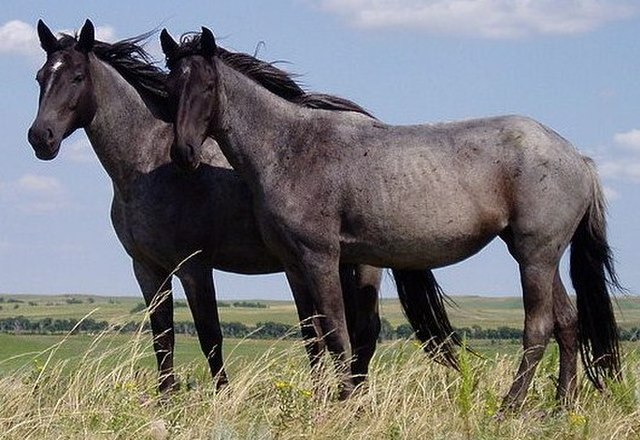Horse meat forms a significant part of the culinary traditions of many countries, particularly in Eurasia. The eight countries that consume the most horse meat consume about 4.3 million horses a year. For the majority of humanity's early existence, wild horses were hunted as a source of protein.
Paardenrookvlees (Dutch-style smoked and salted horse meat) on bread
Hunger during World War II led to horses being eaten.
Horse butcher on the Viktualienmarkt in Munich, Germany
Man eating a bocadillo with horse meat and tender garlic, a popular brunch choice in the Land of Valencia
The horse is a domesticated, one-toed, hoofed mammal. It belongs to the taxonomic family Equidae and is one of two extant subspecies of Equus ferus. The horse has evolved over the past 45 to 55 million years from a small multi-toed creature, close to Eohippus, into the large, single-toed animal of today. Humans began domesticating horses around 4000 BCE, and their domestication is believed to have been widespread by 3000 BCE. Horses in the subspecies caballus are domesticated, although some domesticated populations live in the wild as feral horses. These feral populations are not true wild horses, which are horses that never have been domesticated and historically linked to the megafauna category of species. There is an extensive, specialized vocabulary used to describe equine-related concepts, covering everything from anatomy to life stages, size, colors, markings, breeds, locomotion, and behavior.
Horse
Points of a horse
Size varies greatly among horse breeds, as with this full-sized horse and small pony.
Bay (left) and chestnut (sometimes called "sorrel") are two of the most common coat colors, seen in almost all breeds.








